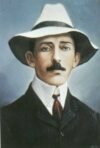Mergers
TOPIC: MERGERS
LEVEL: EASY
Read the introductory text about mergers, following links to additional material where necessary.
Airline mergers have caused a lot of controversy in the history of aviation, some of them proving that bigger is not better at all (http://www.businessweek.com/magazine/content/10_20/b4178007849046_page_2.htm ), yet for industry giants, like Continental and United, learning from other airlines’ mistakes may just not be an option.
The merger between Continental Airlines and United Airlines, after a great deal of intrigue and suspense, was officially announced in May 2010, leaving US Airways, which was also in the process of merger negotiations with United (http://www.nytimes.com/2010/05/03/business/03merger.html ), in midair. The new airline, after the lengthy process of approval from the anti-trust division and much hoped-for backing of employee unions, should become world’s largest airline.
Continental, which is currently considered to be world’s 5th largest carrier, is rumored to be moving its headquarters from Houston to Chicago – home to United Airlines. The upgrade to world’s largest airline, apparently, will come at a price, as mergers are known to cause cutbacks (there are over 16000 employees based in Houston). Local leaders still hope that the merged airline would be based in Houston.
Despite some skepticism, United are having a good year. Just 2 years ago it was Continental that was planning on acquiring United, but pulled out just hours before the tie-up citing United’s unstable finances (http://www.nytimes.com/2008/04/28/business/28air.html ).
Amidst all the media frenzy, experts say the merger will also most likely impact customers…
1. Watch CBS news report about the merger between United and Continental http://www.cbsnews.com/video/watch/?id=6455962n. Determine whether the following statements are true or false:
1. Continental and United have tried merging before. (Answer: T)
2. United and Continental compete on 11 long-haul routes (Answer: F)
3. The merged airline is going to have 10 hubs and it’s going to fly to 370 destinations over 57 countries. (Answer: F)
4. The two airlines will merge to form the largest carrier in the world, and experts predict it will remain that way for a long time (Answer: F)
5. Continental and United have been wanting to merge for about 10 years (Answer: T)
6. There is going to be an inevitable reduction in service on long-haul destinations (Answer: F)
7. Reduction in service will most probably mean an increase in fares (Answer: T)
8. United and Continental are both members of the Star Alliance (Answer: T)
9. The merged airline now has a new slogan that says: “Let’s Merge” (Answer: F)
10. The key to most airlines’ survival these days lies in expanding
and merging with other airlines (Answer: F)
2. Answer these multiple-choice questions based on the video:
1. United is notorious for its: a) in-flight meals, b) poor customer service, c) mergers (answer: 1b)
2. Once United and Continental merge, they are going to: a) shrink their staff, b) lower their fares, c) fly long-haul only (answer: 2a)
3. Not only will United and Continental merge their airlines, but they will also unify: a) frequent flier miles, b) Star Alliance, c) headquarters (answer: 3a)
4. United and Continental will combine their frequent flier miles, but: a) fewer planes will mean fewer available seats; b) United passengers will have a priority, c) Continental passengers will have a priority (answer: 4a)
5. The merger is not yet finalized because United and Continental still have to go through some: a) criticism, b) public scrutiny, c) hurdles (answer: 5c)
2. Read the following article about EU approval of the merger (http://chicagobreakingbusiness.com/2010/07/eu-approves-united-continental-merger.html ) and complete the exercises:
1) Find the right definitions for the following (match the columns):
1) Hurdle
2) Muster
3) Overlap
4) Rigorous
5) Scrutiny
a) careful observation
b) an obstacle or difficulty
c) meeting or gathering
d) scrupulous, severe
e) to partially coincide
Answers: 1b, 2c, 3e, 4d, 5a
2) Answer the following questions to determine your understanding of the text:
1. What does the author mean when he says that the merger “cleared its first regulatory hurdle”? (answer: Passed through its first regulatory procedure)
2. How would you rephrase the sentence “The airline must still pass muster with U.S. antitrust officials”? (answer: The airline must still go through a meeting with US antitrust officials)
3. When you face “far more rigorous scrutiny” than before, you: a. get into more trouble, b. face more competition, c. are taken under more careful observation (answer: c)
4. If a governmental body “wraps up its probe” of your company, it: a. stops criticizing you, b. stops evaluating you, c. stops taxing you (answer: b)
5. When your interests “overlap” with interests of another company, they: a. are in conflict, b. they coincide, c. they collaborate (answer: b)















